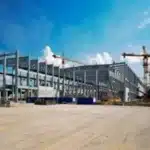Workplace safety is crucial to any business, especially in industries where employees face potential hazards. Site safety audits ensure a safe and compliant working environment, particularly in the construction and industrial sectors. While OSHA inspections are mandatory and may occur without notice, many companies proactively conduct regular site safety audits. This approach allows businesses to identify and address safety risks before accidents or injuries happen. These audits systematically assess workplace safety practices, procedures, and policies to uncover potential hazards, ensure compliance with regulations, and promote a strong safety culture among workers. Below, we outline the key aspects of site safety audits, their benefits, and best practices for conducting them effectively.
The Purpose of Site Safety Audits
Site safety audits aim to prevent accidents and injuries by identifying and mitigating risks. By systematically examining workplace conditions and practices, auditors can uncover unsafe behaviors, equipment malfunctions, and non-compliance with safety standards. This proactive approach helps to address potential issues before they result in accidents, ensuring the safety and well-being of workers.
Critical Components of a Site Safety Audit
Documentation Review: This involves examining safety policies, procedures, and records to ensure they are up-to-date and compliant with regulations. This includes reviewing safety training records, site safety plans, injury and illness records, safety meeting minutes, incident reports, maintenance logs, and written safety policies.
Physical Inspection: Auditors conduct a thorough inspection of the worksite, including equipment, machinery, and infrastructure. This helps identify physical hazards such as faulty equipment, inadequate signage, improper storage of materials, malfunctioning equipment, inadequate personal protective equipment (PPE), or unsafe working conditions.
Behavioral Observation: Observing workers as they perform their tasks provides insight into their adherence to safety protocols. This helps identify risky behaviors and areas where additional training or supervision may be needed.
Interviews and Surveys: Engaging with employees through interviews and surveys helps auditors understand their perceptions of safety and gather insights on potential hazards that might not be immediately visible. At this point, auditors also evaluate the company’s preparedness for emergencies, including the availability of first-aid kits, fire extinguishers, and clear evacuation routes.
Risk Assessment: Auditors assess the likelihood and potential impact of identified hazards. This helps prioritize issues that need immediate attention and develop appropriate mitigation strategies.
Benefits of Site Safety Audits
Accident Prevention: Site safety audits significantly reduce the risk of accidents and injuries by identifying hazards before incidents occur. This proactive approach allows businesses to pinpoint unsafe conditions or practices and take corrective actions immediately.
Enhanced Compliance: Safety audits ensure the workplace complies with local, state, and federal safety regulations. A comprehensive site safety audit can reveal what you are doing well, any gaps and problems, and what needs to be fixed. This helps avoid legal penalties, fines, and potential shutdowns due to non-compliance.
Cost Savings: Preventing accidents and injuries reduces the financial burden associated with workers’ compensation claims, medical expenses, and lost productivity. Investing in safety audits can lead to substantial long-term cost savings.
Enhanced Safety Culture: Regular safety audits promote a safety culture within the organization. When employees see that their safety is a priority, they are more likely to adhere to safety protocols and contribute to a safer work environment.
Continuous Improvement: Safety audits provide valuable feedback that can be used to improve safety practices and procedures continuously. This helps organizations stay ahead of emerging risks and adapt to changing regulations.
Better Emergency Preparedness: Site safety audits often reveal gaps in a company’s emergency preparedness plan. Addressing these gaps can save lives and minimize damage in the event of an actual emergency.
Best Practices for Conducting Site Safety Audits
Develop a Comprehensive Audit Plan: Before conducting an audit, it is essential to develop a detailed plan outlining the scope, objectives, and methodology. This plan should include a checklist of areas to be inspected, documents to be reviewed, and personnel to be interviewed.
Engage a Competent Audit Team: The audit team should consist of individuals with expertise in safety regulations, risk assessment, and the specific industry being audited. External third-party safety consultants can provide an unbiased perspective and bring specialized knowledge.
Involve Employees: Employees should be actively involved in the audit process. Their input and feedback are invaluable for identifying hidden hazards and understanding the practical challenges faced on the ground.
Use OSHA Guidelines: The inspection should focus on OSHA standards. Take Immediate Corrective Action: Address any identified issues as soon as possible. Prioritize hazards based on their severity and potential impact on employee safety.
Document Findings: Detailed documentation of audit findings, including photographs and notes, is crucial for tracking progress and accountability. Action plans should be developed to address identified issues, with clear timelines and responsibilities.
Follow-Up and Review: It is essential to conduct follow-up audits to verify the implementation of corrective actions. Regular reviews of audit results and trends help organizations refine their safety strategies and ensure continuous improvement. Continuous monitoring is essential in maintaining a safe workplace.
Site safety audits are crucial to maintaining a safe and compliant workplace. They play a vital role in preventing accidents and injuries by systematically evaluating safety practices, identifying hazards, and ensuring regulatory compliance. Implementing best practices and fostering a safety culture can maximize the effectiveness of site safety audits.
At Safety Consulting Specialists, we are dedicated to safeguarding your construction sites or facilities with our comprehensive safety solutions. With over two decades of experience, our team understands the critical importance of regular site audits in maintaining a safe and compliant workplace. Our expert consultants are committed to objectively and thoroughly evaluating your site, identifying potential hazards, and offering tailored solutions to enhance safety at your facility.
By partnering with us, you ensure that your construction site meets regulatory standards and fosters a safety culture that protects your workers and assets. Don’t leave safety to chance—reach out to Safety Consulting Specialists today and discover how our site safety audit services can improve your operations.


